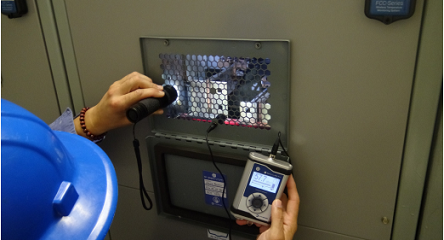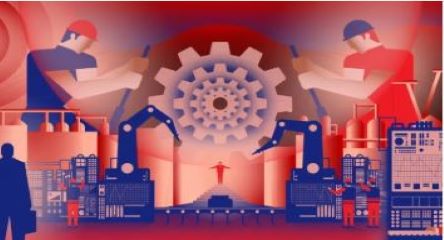Entropy Part 2 – Economics
In Entropy part 1 I introduced a simple 3 legged stool model: design, maintenance and operations being it’s 3 legs. It can deliver high performance at low cost and risk – i.e. high productivity. It is important to keep the legs balanced and indeed intact! Doing so requires a bit of investment. In thermodynamic terms we need to put some energy into the system to keep the entropy from growing. That energy is an investment in maintenance and the payoff comes in the form of steady, predictable revenues with a high margin for profit. Those words should be music to accountants’ ears.
Accountants will like the emphasis on profits but they cannot lose sight of the need to invest. Excessive focus on costs reduces the energy put into the system and allows its entropy (chaos) to increase. Failing to invest enough destabilizes the stool.

Keep in mind that each leg of the stool (design, operations, maintenance) requires some amount of spending (energy) to avoid entropy creep (destabilizing chaos). You want it balanced, not too much, not too little, just the right amount to keep the top of the stool level.
Design:
Once the design is established we can do little to change it without a lot of investment. It is better to spend a bit more upfront than a lot later. Whatever design we end up with will be subjected to the natural forces of nature; entropy will increase relentlessly and checked only by the energy we put into good operational practices and maintenance.
We need to invest in a design that produces a system that is reliable and easy to maintain quickly. Reliable products are often more expensive than unreliable ones. They’ve required more in-depth thought and engineering, better materials and more diligent attention to detail in construction. We can expect our capital spending on the system to be a little bit higher if we want better performance. Decisions among competing design alternatives are best made on the basis of forecast Life Cycle Cost, rather than the initial cost.
New systems are not built without good business cases. Usually, we want our business case to be well above some minimum acceptable financial “hurdle rate” or some other form of target “rate of return.” If we are wed to the new project and not to its benefit to our company, then there is an opportunity for entropy to creep into our collective thinking.
Here’s how. Let’s assume that this project is the result of a lot of effort and promotion by someone. It has become, in a sense, someone’s proverbial “baby”. They want it. They will do just about anything to ensure its viability. To ensure the project gets built, the business case can be embellished. By showing that the new project has the highest possible return on investment it looks like a good business and gets chosen. Embellishment is easily done by minimizing the need for initial cash outlay, downplaying both the risks and costs and optimistically forecasting revenue potential. Life Cycle Cost analysis can help to avoid this, but like any analysis, it too can be manipulated.
At the decision stage, all options will be presented more or less as best-case scenarios. More often than not, however, projects come in late and over budget. Entropy has grown! Lowball estimates of costs and schedules get projects into trouble. Project risks are increased (entropy) because of overly optimistic forecasts (low investment = low energy).
Lowball estimates most likely do not allow for the needed engineering and quality assurance to ensure high reliability and maintainability. That will be a problem later once operations begin.
Operations:
Ensuring trouble-free operations means having a design that is operable and a crew of operators that knows what it is doing. Operability is, like reliability, another design feature.
One byproduct of projects that are late and over budget is poor training or even no training. Training is usually timed to occur late in the project, near startup and operations when it is needed. However, if the project is over-budget, then the training budget (which is not yet spent) becomes one of the few places to save money – an easy target. Training suffers and with it so too the ability of your operators to run the plant correctly. Decisions to pull back on training (reduce your energy input) increase entropy and chaos. Your operators will struggle to run the system as it is intended and will make mistakes. Many of those mistakes will result in equipment failures – more chaos (entropy rising).
Put energy into keeping entropy at bay through training. Operators can help keep the system in good condition by doing some very basic things to take care of it, be diligent observers of how well the system is operating and spot problems early.
Maintenance:
Getting the maintenance right can be more complex than the other two. I’ll discuss that in the third part of this series but suffice to say here that a small amount of energy (i.e. spending) can pay off (i.e. reduce entropy) with a huge payback. Even in operational systems, the payback on defining the right maintenance to perform can far outstrip the payback on many new projects (it’s just not as sexy to maintain as it is to build).
Economics:
Assuming we get the right amount of energy (spending) applied to get a balance in the length of each leg of our stool, we should have minimal entropy growth over time.
So far I’ve written about under-spending – not enough energy input. However, it is also possible to spend too much on the wrong things – effectively making a leg of the stool too long relative to the others.
Too much design focus is tantamount to striving for perfection. You may never achieve it but you can spend a lot of money trying. Even if you do achieve it, maintaining it might be a challenge. You won’t be able to engineer-out all of the possible failures and all the possible factors that could lead to human error. Over-engineered systems can be hard to operate unless the engineering effort goes into operability. What we want to achieve is balance – not perfection. One mining company purposely went with older technologies that were proven to make it easier to operate and maintain and to reduce training requirements. They had a near trouble-free startup and smooth operations from a plant that was built on time and within budget!
Likewise, you can spend too much on operations training taking the level of knowledge well beyond that needed for safe and effective operations. And in maintenance, you can spend way too much. Some people consider that maintenance occurs somewhere along a spectrum from reactive to completely proactive. That’s an inaccurate perception – the best maintenance programs will include preventive, predictive, detective tasks and allow some failures to occur. Not all failures are worth being proactive about.
Getting that balance is what we want to achieve and that requires careful thought, analysis and decision making.






